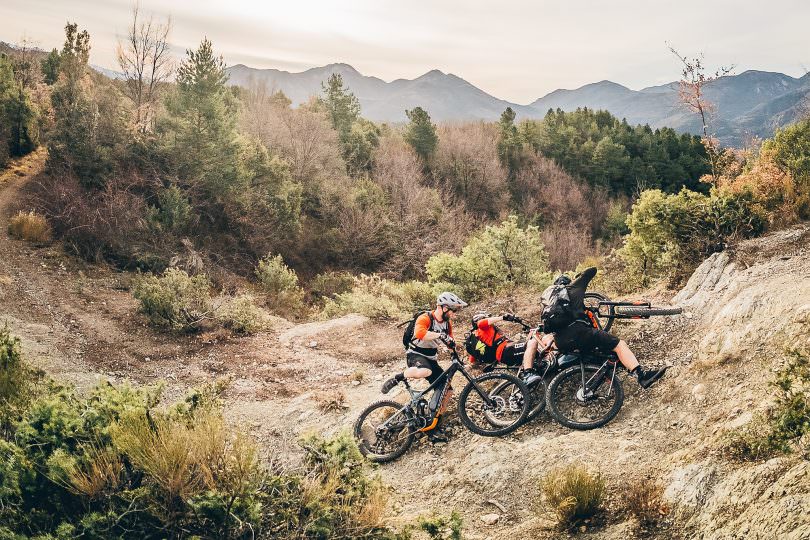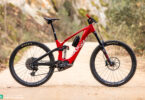Emergency tips: What to do in case of an eMTB accident

“Shit! Can you hear me? Hello, can you hear me?!” Unconscious. Your best riding buddy is sprawled out ahead of you on the trail. Unresponsive, your face drains of colour. Just moments before you’d all been joking. Jeez, how did this happen? What do I need to do now?
This is exactly the moment you wish you’d paid more attention at school in those obligatory first-aid classes rather than messing about with classmates. Back then you’d scoffed, and even today you might be amongst the masses who brush off the risks each time you go riding: “Mate, what’s the chance of that happening? Course it won’t.” But regardless of experience, accidents can still happen. The right preparation and knowledge about how to respond in the event of accident provide a dosage of insurance and can minimize the severity of the consequences – yet the risks remain. In most cases, people come out with minor injuries and grazes, but other times you could be the one saving a life. That’s why it’s not only important to be versed in how to react, but also to make sure your backpack contains the essentials on every ride.
Must-haves on a ride:
- Quality first-aid kit, such as the great offerings from EVOC or Deuter
- A spare jacket that can be used to keep the injured rider warm
- Recovery blanket/s, ideally two
- A decent OS map of the area (at least 1:50.000)
- Smartphone with a map and GPS function
Emergency numbers:
- Europe-wide emergency number: 112
- Country-specific numbers to know: 999 (UK), 140 (Austria), 112 (South Tirol) or 118 (Italy), 1414 (Switzerland), but (144) for the Valais canton
Your initial reaction
It isn’t uncommon to be hit by a strange numbness in the event of an accident; this can render you frozen and stressed, but it’s important to remain calm, take some deep breaths and take stock of the situation. Before throwing yourself blindly into action, make sure that you’re in a safe position and out of the way of harm and any potential oncoming traffic.
Delegate
When out riding with friends, it’s easier to split the burden and take control of the situation. If it’s a guided ride, then the guide will certainly be versed in situations like this. If you’re out in the mountains, then avoid embarking on any risky, spontaneous rescue missions. Oversee the situation by spreading out around the injured rider to ascertain the location, but always keep within shouting distance of each other. Just as looking after the injured rider is a priority, so too is making sure you know exactly where you are. The classic way of determining your location on a map is always a good and feasible route to go, but also try dropping a pin on Whatsapp or using your phone to locate yourself. Do not solely rely on GPS coordinates though – you should always know where you are independently of the digital world. Note: assign one of the group the task of staying with the injured rider to make sure his or her condition doesn’t worsen or is noted on time.
So, what’s the situation?
You need to ascertain the condition of the person. If there’s an open wound bleeding profusely, this needs to be stopped by wrapping something around it tightly and applying firm pressure with your fingers. If the bleeding is serious call the emergency service immediately. They will need to know the following information: where are you, how many are injured, and what is the status of the injury? Tell them your name and wait for further questions. If there’s no visible bleeding and the rider is still conscious, find out how the accident happened by talking to them. There may be more injuries due to the crash which the injured rider might not sense yet, so check their entire body from top to bottom. If anything is out of the ordinary or the rider is in severe pain, make sure you call the emergency services immediately. Only after they have been contacted should you wrap any additional minor cuts and injuries.

Create a calm environment
Kneel next to the rider and talk softly to put the injured rider at ease. Body contact is important for the injured person to really know he or she is not alone and will not be left alone. Accordingly, put your hand on their shoulder to provide comfort. The adrenaline will ease after approximately fifteen minutes and this is when the extent of the pain and injuries will become apparent – both to you and the injured rider. In an extreme case, this could lead to circulatory collapse and unconsciousness. Put the rider in the recovery position if they’re still breathing. If they’re not, you’ll need to resuscitate them.
Permanent care
Continue to monitor the rider’s condition and find out how they’re feeling. Be positive and make sure they’re in a comfortable position. The warmth of a jacket will always be welcomed (even in summer). The more you talk, the shorter the perceived wait for the emergency services.
Waiting for help
Make sure your whole group is aware of the injured rider’s condition. if your location is tricky to find and if there’s the potential for two riders to go and meet the emergency services en route, then that may speed up their arrival. After the injured rider has been stabilized and taken away by the paramedics or mountain rescue, it’s time to discuss whether everyone feels fit and stable enough to continue the ride. In the aftermath of a serious crash, it often makes sense to curtail or abort the planned ride.
Five tips from the expert Dani Hornsteiner

Qualified mountain guide Dani Hornsteiner is an active member, instructor and operation leader of one the Bavarian mountain rescue teams. Despite spending the majority of her time working in the mountains, she still loves breathing fresh mountain air during her free time too, whether that’s ski mountaineering, riding, or hiking. She also runs invaluable outdoor-specific first aid courses for those spending time in the mountains.
1. Stay calm. Take stock of the situation.
2. Always have a well-stocked first aid kit on hand.
3. Keep the injured person warm, even in the summer.
4. Stay with the injured person, be empathic and caring.
5. Knowing you’ve completed an outdoor-specific first aid course gives peace of mind.
This article is from E-MOUNTAINBIKE issue #013
E-MOUNTAINBIKE Magazine is published in a digital app format in both English and German. Download the app for iOS or Android to read all articles on your tablet or smartphone. 100% free!

Did you enjoy this article? If so, we would be stoked if you decide to support us with a monthly contribution. By becoming a supporter of E-MOUNTAINBIKE, you will help secure a sustainable future for high-quality cycling journalism. Click here to learn more.
Words: Photos: Valentin Rühl










